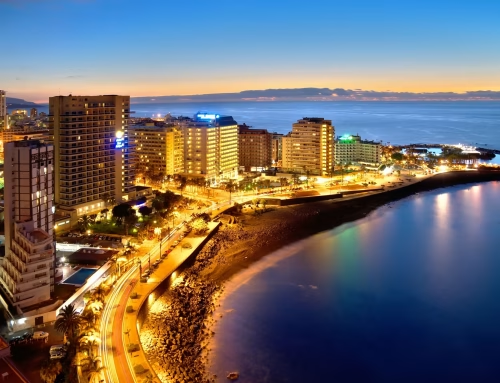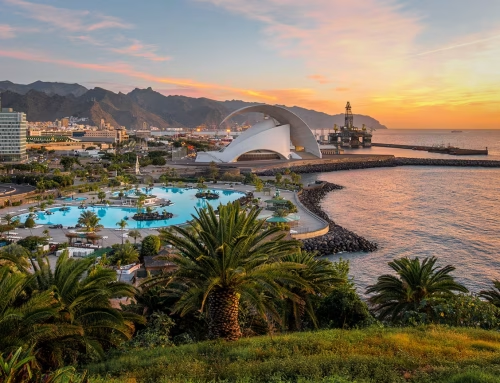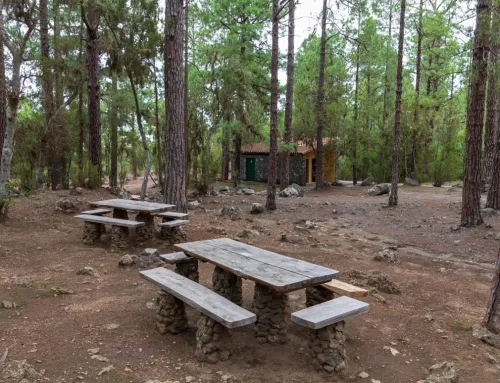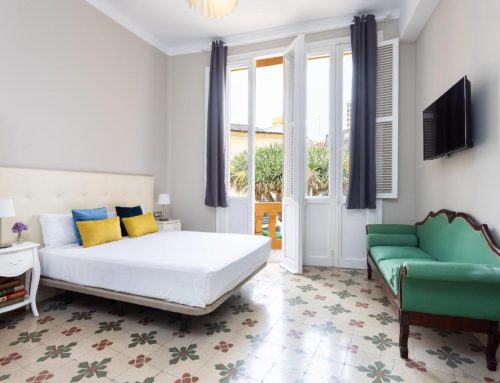This selection of essential places to see in Tenerife will undoubtedly help you plan your tour of one of the best islands to visit in Spain.
The largest of the Canary Islands is like a micro-continent that can boast having almost everything. With “Papa Teide” dominating the island and offering you the chance to contemplate some of the most fascinating landscapes in the world, Tenerife has an incredible variety of scenery thanks to its diverse climates. From the dense laurel forests of the Anaga Rural Park to the steep cliffs of Los Gigantes, we’re sure you’ll fall in love with it after reading this list of things to do in Tenerife.
Known as the “Island of Eternal Spring,” there really isn’t a “best” time to visit Tenerife. Even in the coldest months of the European winter, you can enjoy the beaches in the south of the island. That’s why it’s one of the most coveted destinations for those wanting to escape freezing temperatures.
Given its size and the large number of places to visit in Tenerife, our recommendation is that the first thing you do when planning your trip is rent a car. If possible, devote a whole week and split your stay between the north and the south to make the most of your visit, since distances might feel quite long if you stay in just one place. That said, it always depends on your preferences and the kind of trip you want to have.
Below we’ll share the main things to do in Tenerife, plus travel tips and suggestions that we’re sure will be useful. At the end, you’ll also find a map to guide you. Let’s get started!
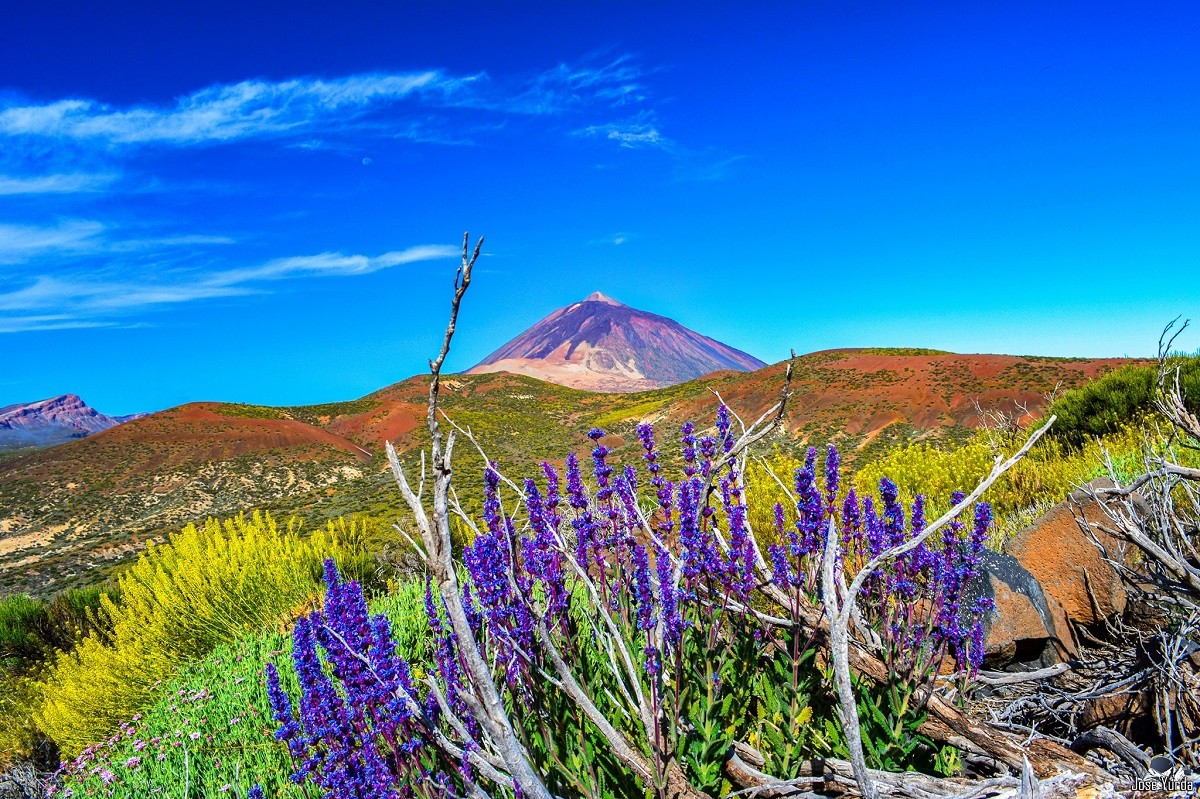
1. Teide National Park, the Must-See Place in Tenerife
Beyond being the highest peak in Spain at 3,715 meters above sea level, El Teide is Tenerife’s icon and a place that will leave you speechless. Truly, in just a few kilometers, you’ll feel like you’ve been transported to Mars or the Moon.
There are endless ways to explore it, depending on how much time you want to spend. In our opinion, at a minimum, you should walk part of the trail around the Roques de García (signing up for this free tour is highly recommended), take the cable car, and drive along much of the road that passes through the national park. If you want a complete experience, consider climbing to the summit, which is relatively easy if you start from where the cable car drops you off.
Although we talk about it in more detail in the best excursions in Tenerife, we believe the most interesting ones are:
- Excursion with transportation from La Orotava or Puerto de la Cruz (expert guide + cable car)
- Teide excursion from Puerto de la Cruz (no cable car)
- Pick-up in the south of the island (Los Gigantes to El Médano) + cable car ticket
- Teide excursion from the south of the island (no cable car)
Also, due to the high altitude, the almost total absence of light pollution, and of course the smaller number of tourists, heading to Teide at night offers a completely different experience. Clear skies are practically guaranteed, so we wouldn’t hesitate to sign up for one (or more) of the following activities:
- Night hike on Teide (easy, guided route)
- Star-gazing on Teide
- Astronomical tour of Teide from northern Tenerife (pick-up in Puerto de la Cruz, La Orotava, Santa Úrsula)
- Astronomical tour of Teide from southern Tenerife (pick-up from Los Gigantes to El Médano)
For more information, check out how to climb Teide.

2. The Cliffs of Los Gigantes
The Guanches (Tenerife’s original inhabitants) used to say the cliffs of Los Gigantes were the “wall of hell,” that the world ended there. It’s understandable why they thought so: these volcanic rock walls stand over 600 meters high, interrupting Tenerife’s coast and making you feel very small.
For us, visiting Los Gigantes is one of the best things to do in Tenerife. You can see them from almost anywhere in Puerto de Santiago, but if you’ve rented a car, we recommend stopping by the Mirador de Archipenque, which offers spectacular views. Another great spot to admire them is the small Playa de Los Guíos, right next to the cliffs.
On the other hand, the channel separating Tenerife from La Gomera is home to over 20 species of cetaceans, and Puerto de Santiago is the starting point for the best whale-watching excursions. If you have the opportunity, we recommend this sailing excursion, which respects the animals and allows you to admire Los Gigantes from the sea—making the experience even more complete.
If you’re a sports enthusiast, you’ll love this kayak tour around Punta de Teno, which offers a wonderful route paddling along the Los Gigantes cliffs.
If you have time and want a swim, Puerto de Santiago also has a nice natural pool called Charco de Isla Cangrejo.
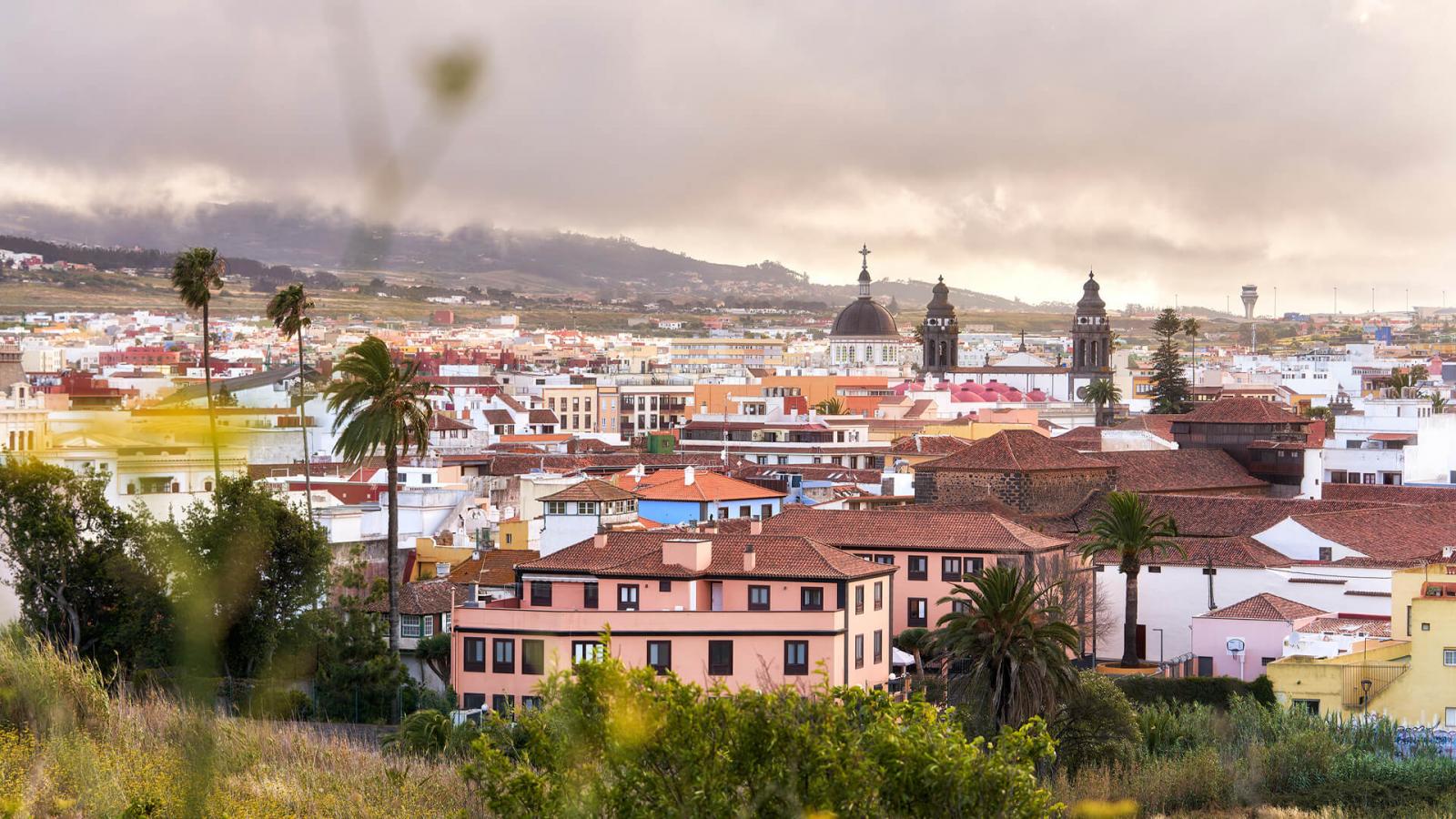
3. La Laguna, One of the Prettiest Cities to Visit in Tenerife
Santa Cruz de Tenerife is the island’s capital, but if we had to choose one city to visit in Tenerife, it would be San Cristóbal de La Laguna. It’s the second most populated city on the island and the third in the archipelago, and it has a lively university atmosphere as the first university in the Canaries was founded here. Moreover, it has been a UNESCO World Heritage Site since 1999 for being a unique example of a non-walled colonial city.
Its charm is undeniable. You’ll find traditional Canarian mansions with gorgeous wooden balconies, as well as churches made of volcanic stone, guarded by majestic dragon trees. The best way to really get to know it is by signing up for a free tour or a guided visit. In just a couple of hours, you’ll have visited its main spots and learned about its history and curiosities from an expert guide. Afterwards, spend your time strolling around and, of course, eating in a guachinche, the traditional restaurants in northern Tenerife. Among the most famous are El Fogón and La Cueva de Casiano.
By the way, don’t forget to bring some warm clothing, as La Laguna’s microclimate tends to be cool even on summer days. You’ve been warned!
For more info, you can read this list of places to see in La Laguna.
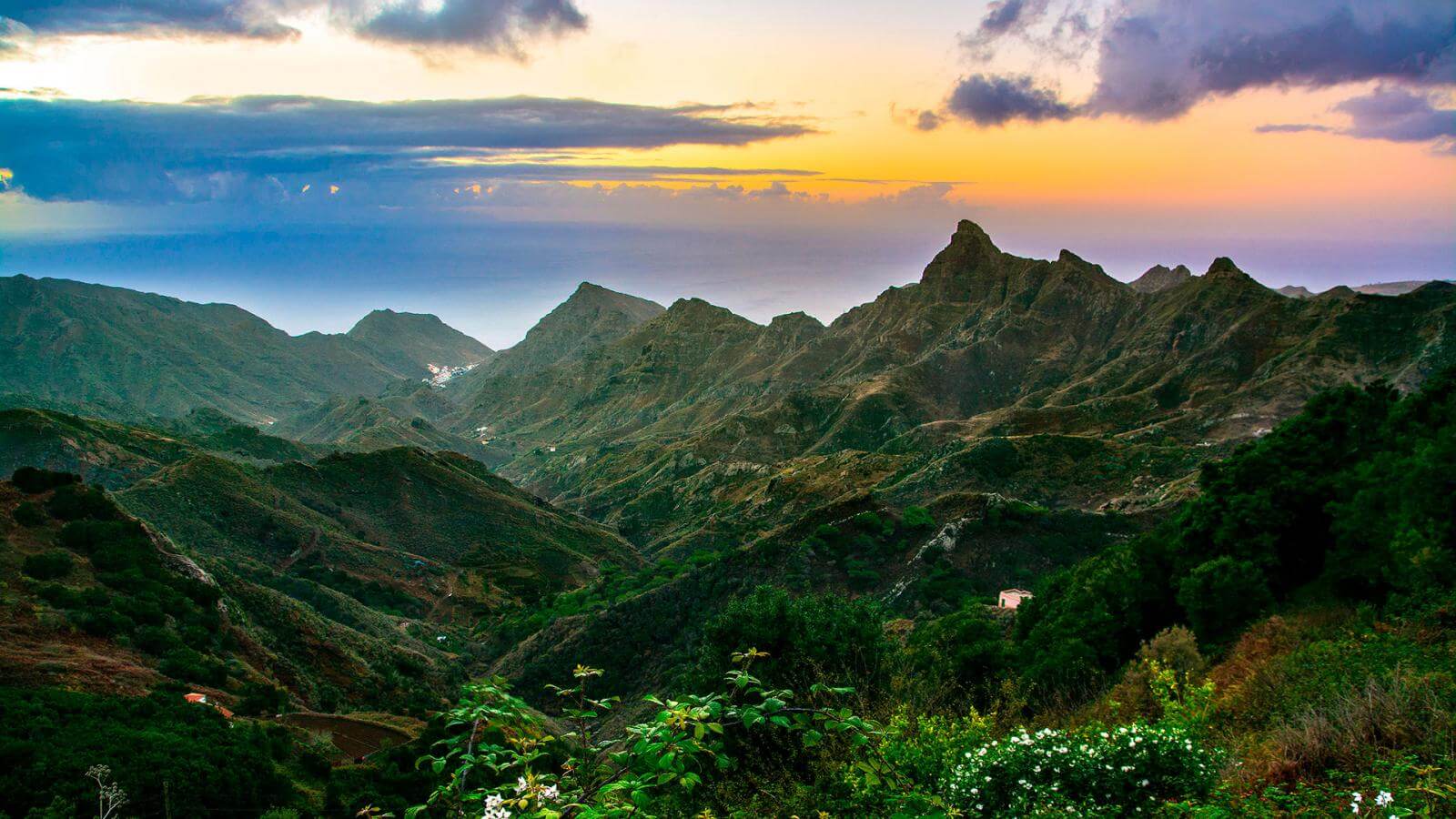
4. Anaga Rural Park
In stark contrast to much of the island’s arid south, the north features a lush green paradise that captivates anyone who visits. The Anaga Rural Park is, without a doubt, one of the must-see places in Tenerife. Much of its 14,000+ hectares is covered with Canarian laurel forests, making it a verdant paradise dotted with cliffs, rock formations, ravines, and breathtaking beaches. Also, Anaga has been a Biosphere Reserve since 2015, partly due to having the greatest number of endemic species in Europe.
As you might imagine, it’s a perfect place for hiking. Whether you’re into trekking or not, we encourage you to visit because there are trails for everyone. The most famous is the “Sendero de los Sentidos” (Path of the Senses), actually composed of three mini-trails. The first is just 350 meters long with almost no elevation gain—perfect for a short walk and a refreshing “forest bath.”
If you want to explore Anaga a bit more, “Bosque de los Enigmas” (Forest of Enigmas) is another trail that might interest you. It’s a 5-kilometer circular route with little elevation gain, perfect for all kinds of travelers—even families with young kids—thanks to educational signs that feature riddles. To learn more about the importance of this place, we recommend signing up for this guided hiking tour, which explores the route with an expert guide.
But Anaga is much more. Check out the official website for detailed info on the various trails in the park, and also consider visiting the spectacular Playa de Benijo (one of the best beaches in Tenerife) and Playa del Roque de las Bodegas.
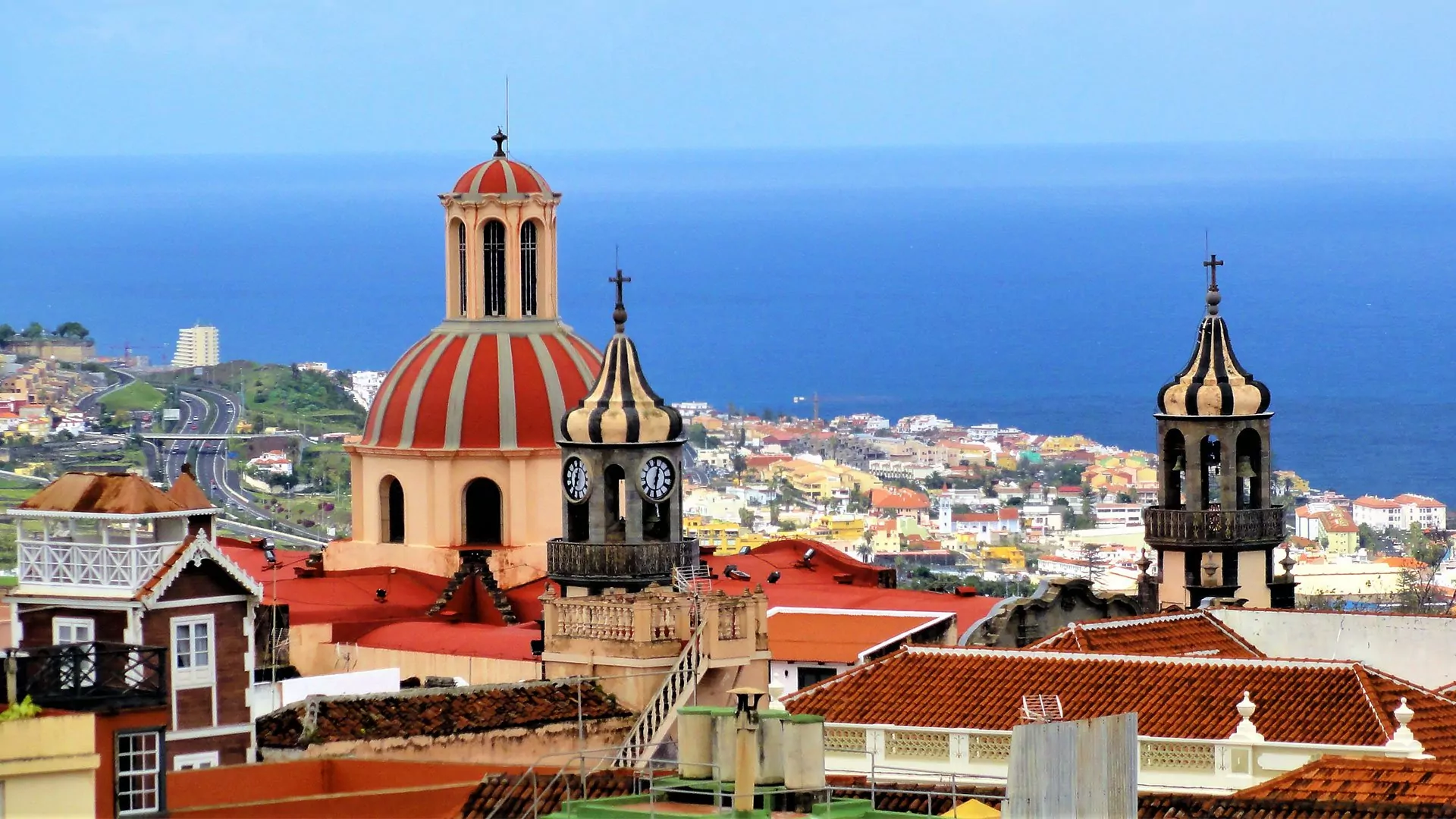
5. La Orotava
They say La Orotava is “the city of the balconies,” and you’ll quickly see why. With a historic center declared a National Historic-Artistic Site, it’s one of the most charming places to visit in Tenerife.
You can explore its best corners in a single day, but don’t miss the Casa de los Balcones, a 17th-century home showcasing typical Canarian architecture. You can buy your ticket in advance if you wish.
Other places worth seeing include the La Orotava City Hall and its monumental square, Casa Lecaro, Iglesia de Nuestra Señora de la Concepción, Liceo Taoro, and especially the Jardines del Marquesado de la Quinta Roja. From this spectacular garden, you’ll have wonderful views of La Orotava and the sea. To get the most out of your first visit, consider signing up for a free tour that goes through all these spots with a specialized guide.
For more information, you can read this list of places to see in La Orotava.
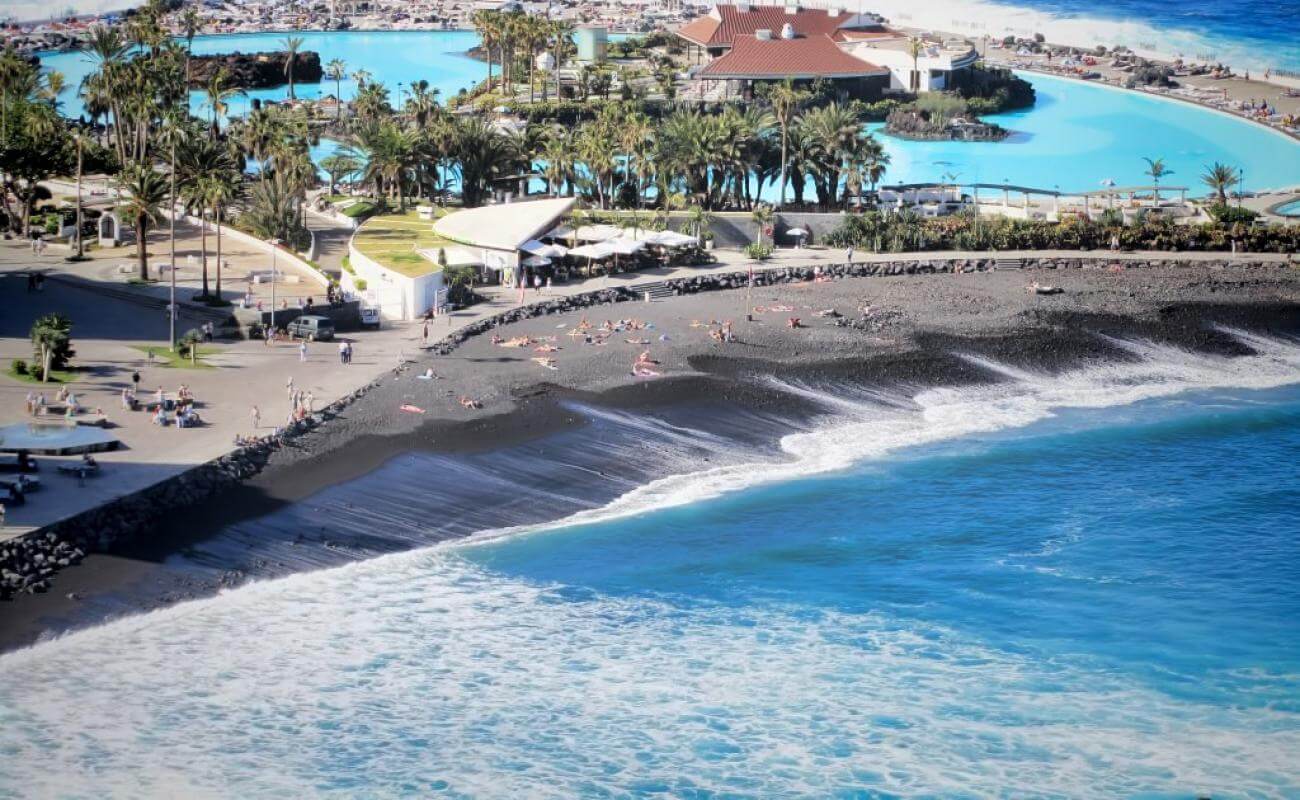
6. The Best Beaches to See in Tenerife
Although we’ve mentioned some already, you’re probably curious about the best beaches to visit in Tenerife. Enjoying them is often the main reason many people come to the island.
Before highlighting the most spectacular ones, note that many beaches in Tenerife—given the island’s volcanic origin—have dark sand. It doesn’t mean they’re not worthwhile; they’re just different from the typical golden-sand beaches you might imagine.
Here are a few Tenerife beaches you’ll love:
- Playa de Las Teresitas (Santa Cruz de Tenerife): one of the few golden-sand beaches in Tenerife, created by importing about 270,000 tons of sand from the Sahara. With its clear waters and natural surroundings, it’s one of the island’s most famous. Plus, you’ll find several chiringuitos on the sand.
- Playa de Benijo: very picturesque, thanks to its location in Anaga and two striking rock formations.
- Playa de Diego Hernández (Adeje): one of the island’s most unspoiled beaches, with no services and a steep descent to access. It’s a nudist (though also used by non-nudists) beach with golden sand and crystal-clear water, best visited at low tide.
- Playa de La Tejita (El Médano): although it’s often windy, it’s one of our favorites, thanks to its golden sand and fairly unspoiled surroundings.
- Playa El Bollullo (La Orotava): a black-sand beach surrounded by banana plantations, it’s one of the most striking on the island. Beware of currents, but there’s a restaurant with fantastic sea views to relax.
Also, because of Tenerife’s volcanic nature, the island is full of natural pools (charcos) that rival many of its beaches. The water is crystal-clear, and most pools have been adapted for safe swimming. Some of the best include:
- El Caletón in Garachico
- Bajamar natural pools
- La Jaquita natural pools in Alcalá
- Charco de Isla Cangrejo in Puerto Santiago (Los Gigantes)
- Charco del Viento in La Guancha
- Charco de Los Chochos in Los Silos
- Piscina natural Jóver (La Laguna)
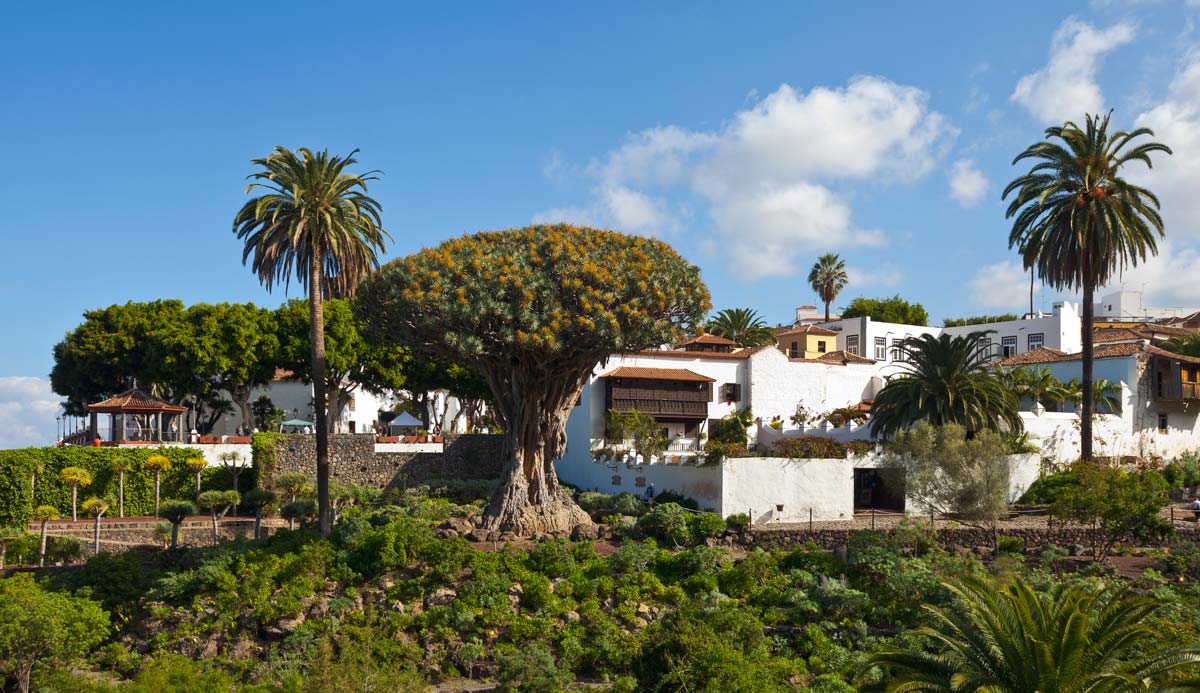
7. Icod de los Vinos
Another thing to do in Tenerife—one of the Canary Islands’ top destinations—is to head to the quaint town of Icod de los Vinos, also known as La Ciudad del Drago (the City of the Dragon Tree). Here, you’ll find one of the island’s most famous symbols: the Drago Milenario (Millennial Dragon Tree). This Canarian dragon tree is about 18 meters tall and roughly 20 meters in diameter, estimated to be around 700 years old. Although you can see it from Plaza de San Marcos, it’s well worth entering the Parque del Drago to see it up close and explore the rest of the botanical garden. You can buy your ticket in advance if you like.
Admiring such a majestic tree is reason enough to come here, but Icod de los Vinos is also charming, with cobblestone squares, historic palaces, and manor houses turned into wineries or museums. A good idea is to sign up for a free tour that lasts around 90 minutes, covering the town’s highlights.
Lastly, Icod de los Vinos is home to the Cueva del Viento, the fifth-largest volcanic tube in the world (after those in Hawaii). This volcanic cavity formed about 27,000 years ago during the first eruptive phase of Pico Viejo, and exploring it is truly fascinating. You have to book in advance through its official website.
For more information, check out this list of places to see in Icod de los Vinos.
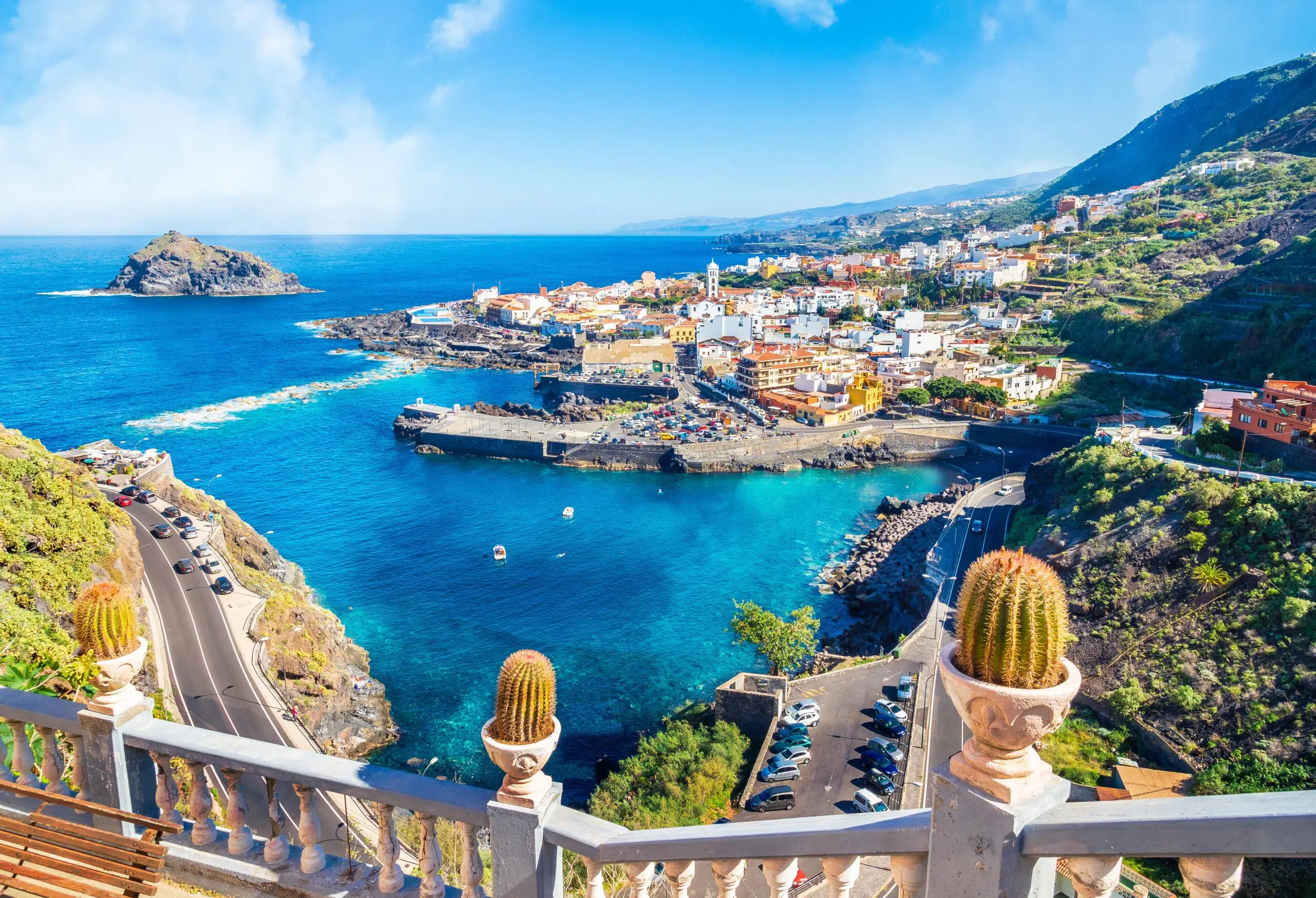
8. Garachico, One of the Most Charming Towns to Visit in Tenerife
Did you know Garachico was once the island’s main trading port until 1706, when the Arenas Negras volcano eruption buried the port and much of the town? Although it never regained its commercial prominence, it remains one of the must-see places in Tenerife thanks to its natural surroundings, religious buildings, and picturesque plazas.
The historic center is compact and centered around Plaza de la Libertad, but we recommend strolling its colorful streets all the way to the Ermita de San Roque. You can do this on your own, but we think the best way to enjoy it is with a free tour. Afterward, don’t miss a dip at El Caletón, some of the most famous natural pools in Tenerife, formed by cooling lava from the Arenas Negras eruption.
For more details, check out this list of places to see in Garachico.
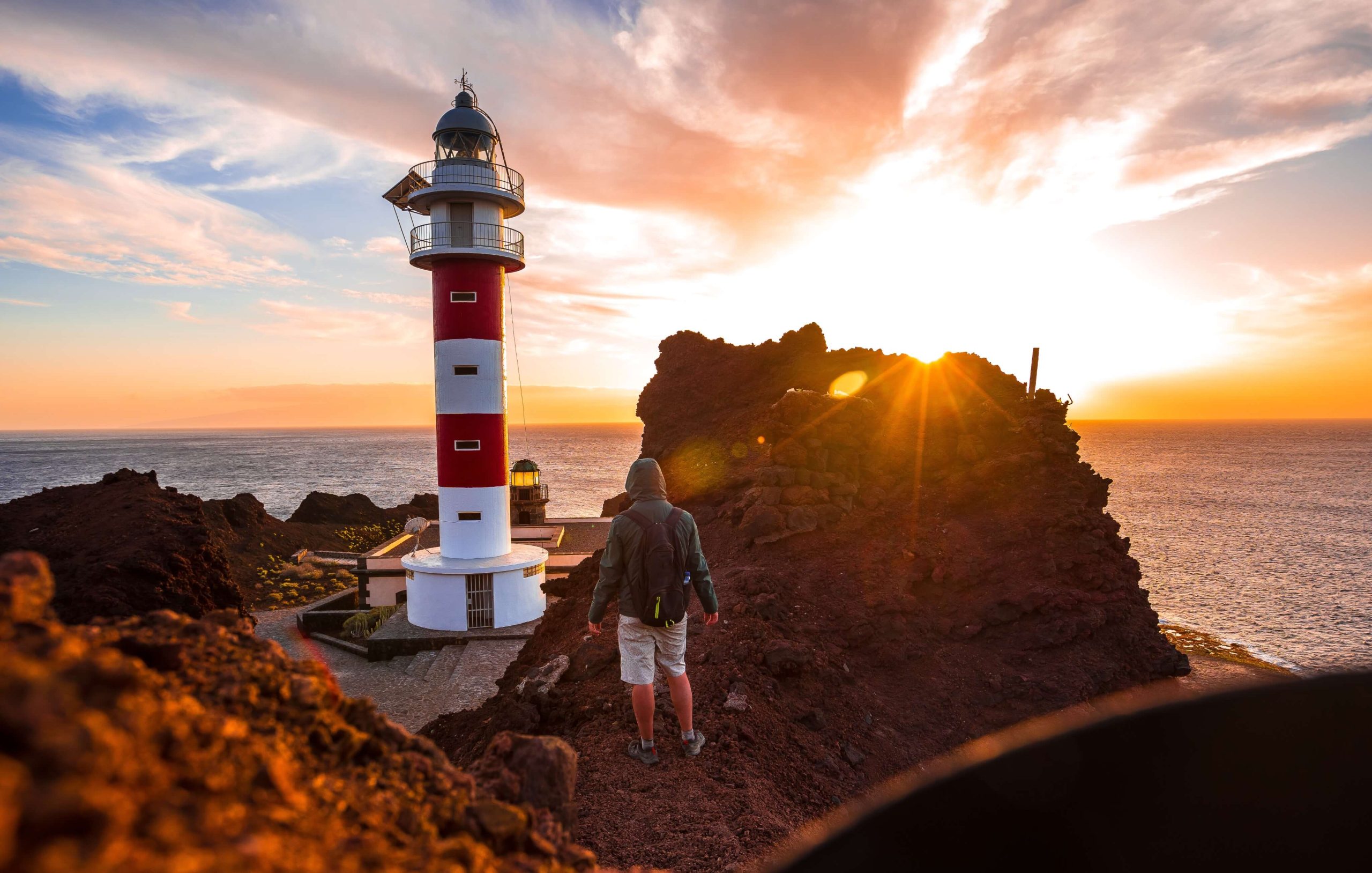
9. Masca and Punta de Teno
Tenerife’s westernmost point is occupied by Teno Rural Park, one of the island’s most fascinating areas. With over 8,000 hectares, it’s also one of the least spoiled. Its volcanic landscapes are striking, featuring impressive views of the Los Gigantes cliffs and the iconic Punta de Teno Lighthouse, built in 1897 using stone from La Gomera. You can catch incredible sunsets here.
Remember that car access is restricted at certain times because it’s a protected area. You’ll need to take a guagua (bus) from Buenavista del Norte and, once there, you can explore on your own or, even better, join a hiking excursion to learn more about the place. Another activity you’ll love is this kayak tour, allowing you to paddle near the impressive cliffs at sea level. If you’d prefer a more relaxing option, consider a boat tour.
On the road between Buenavista del Norte and Santiago del Teide lies one of the most picturesque hamlets in the Canaries: Masca. If you’re in good shape, don’t miss the Barranco de Masca, also in Teno Rural Park. The round trip takes about 6 hours since the jetty at the end (down on the beach) is not currently in use.
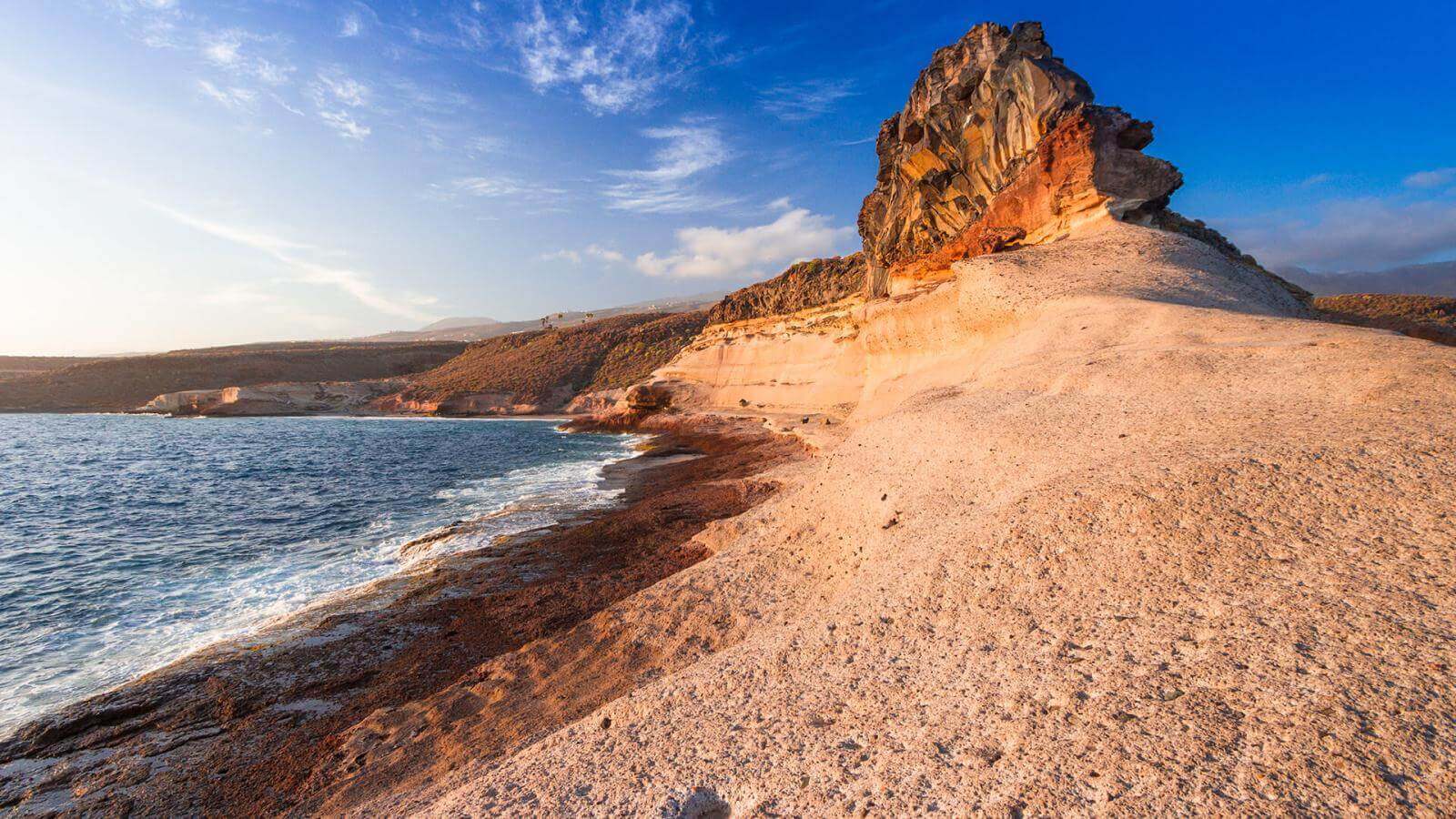
10. Enjoying the Sea—A Must-Do in Tenerife
Lying on the beach or splashing around in the natural pools is great, but those aren’t the only ways to enjoy the sea around Tenerife. The options are nearly endless, but we’d suggest three major ones: taking a boat trip, snorkeling or scuba diving, and/or doing water sports such as surfing, windsurfing, or kitesurfing.
There are plenty of ways to tour the island’s southern coast by boat, taking in Tenerife’s landscapes (often with views of Teide from the sea) and spotting marine wildlife. Some great tours include:
- Catamaran ride from Costa Adeje
- Sailing trip from Costa Adeje
- Boat rental with skipper in Costa Adeje
- Boat rental without a license in Costa Adeje
Meanwhile, the waters around Tenerife have some of the richest marine life in Europe, so whether you’re experienced or not, exploring the underwater world can be fascinating. If you’re interested in snorkeling and want to go on your own, two good spots are Monumento Natural de Montaña Amarilla in Costa del Silencio and El Puertito de Adeje. If you’d love to see sea turtles, try a kayak and snorkel excursion to the Palm-Mar Wall, home to numerous green sea turtles.
If you want to try scuba diving with a tank, consider a discover scuba session (bautismo de buceo) in Las Galletas, Radazul, Los Cristianos, La Caleta de Costa Adeje, or Abades. If you’re serious about diving, you can spend a few days earning your Open Water Diver certification in Los Cristianos or Radazul.
Finally, Tenerife is also a top destination for surfing. Check the wave conditions, but popular spots include El Médano, Puerto de la Cruz, and Las Américas. If you’ve never tried it, you can book a surf lesson in Las Américas. If you’d rather try kitesurfing or windsurfing, head to El Médano.
11. More Things to Do in Tenerife
As you can see, there’s no shortage of things to do in Tenerife. In fact, the title of this post is somewhat misleading since we’ve listed more than 10 places already (not counting all the beaches!), and the island has many more attractions that could take hours to describe.
We believe the places listed above are the must-sees in Tenerife, but we can’t fail to mention these others:
- Santa Cruz de Tenerife: The island’s capital is worth a few hours’ stroll to see places like the remains of the Castillo de San Cristóbal, Iglesia de San Francisco de Asís, or Iglesia de la Concepción. You’ll also find the striking Auditorio de Tenerife “Adán Martín” (by Santiago Calatrava), the Parque Marítimo César Manrique, and the Palmetum.
- Rambla de Castro: It’s become a hit on Instagram, and for good reason. Its lush vegetation of Canarian palms and dragon trees contrasts beautifully with the blue ocean. If you’re near Puerto de la Cruz, it’s well worth a visit. There’s also a pebble beach at the end where you can take a refreshing dip.
- Arco de Tajao: A curious volcanic-lava formation also popular on social media, located in the Barranco de Vijagua and easy to reach from the road.
- Carnaval de Tenerife: The second-biggest carnival in the world (after Rio de Janeiro), declared a UNESCO World Heritage and a Festival of International Tourist Interest. It’s held between January and February, bringing color and music to the whole island. If you’d like to visit during this time, book your accommodation and transport well in advance.
- La Giganta de Santa Úrsula: Found in La Quinta de Santa Úrsula, near La Orotava. This lovely 4-meter stone sculpture is adorned with plants and flowers—something unusual to see in Tenerife.
- Barranco del Infierno: One of the most interesting hikes in Tenerife if you have time. It’s a 3-hour trail passing various viewpoints and ending at a beautiful waterfall. It’s a protected area, so you must book ahead.
Where to Stay in Tenerife
Choosing where to stay in Tenerife can be tricky because it’s quite large, and traveling between places can easily take over an hour. For reference, going between two of Tenerife’s major sights—Anaga and Los Gigantes—can take about 90 minutes by car via the highway. It’s doable, but it might feel long.
Thus, depending on your itinerary and how many days you have, you might want to stay in either the north or the south. If it’s your first trip to Tenerife and you only have 3-4 days, you might prefer northern areas like Puerto de la Cruz, La Orotava, or even Garachico. You won’t be next to the best beaches, and the weather is typically cooler than in the south, but many cultural and natural attractions are easier to reach.
If, on the other hand, you want a warmer climate and beaches, the south is your best bet. In our opinion, places like El Médano or Los Gigantes are excellent for those looking for a less crowded experience. That said, Costa Adeje has many resorts that are great for people who want convenience and immediate access to the beach.
If you have more than four days to check off everything to do in Tenerife, consider splitting your stay between the north and the south to optimize travel times.
The good news is, there’s a huge variety of accommodations on the island, from basic hostels to high-end all-inclusive resorts. Book in advance to secure good prices, especially in high season (which is almost all year) and particularly around periods like Easter or Christmas.
Here are some suggestions for northern Tenerife:
- Hotel Puerto Palace (mid-range, in Puerto de la Cruz)
- Hotel Botánico & The Oriental Spa Garden (one of the highest category hotels in Puerto de la Cruz)
- Hotel Alhambra (in La Orotava, one of the loveliest places to stay)
And a few for southern Tenerife:
- Klayman Diamond Aparthotel (spectacular views of Los Gigantes from the pool)
- Gran Meliá Palacio de Isora Resort & Spa (an impressive resort near natural pools and beaches in Alcalá)
- Luxury Apartment Calle Pizarro Tenerife (near La Tejita Beach in El Médano, with sea views)
You’ll find plenty more options on hotel booking websites.
For more info, read this post on where to stay in Tenerife.
How to Get to Tenerife
The best way to get to Tenerife depends on where you’re coming from, but most travelers arrive by plane. The island has two airports (one north, one south), with the northern airport handling more flights from mainland Spain. Because Tenerife is popular, even though there are several low-cost airlines, you should book early to get good fares.
You can also reach Tenerife by ferry from other Canary Islands or even from Huelva in Andalusia. Look up prices and schedules on major ferry platforms.
Once you arrive, you can use the local bus service (commonly called guaguas), but keep in mind travel times can be long, depending on your destination. That’s why we recommend either booking a transfer in advance or, ideally, picking up a rental car as soon as you arrive. Having your own vehicle is undoubtedly the best way to visit all the must-see places in Tenerife.
Map of Things to Do in Tenerife
To help you get your bearings, we’ve created a map featuring the main places to see in Tenerife:
We hope this selection of the best things to see in Tenerife has served as inspiration for your next trip. In any case, if you have any questions or suggestions, feel free to leave them in the comments section.

